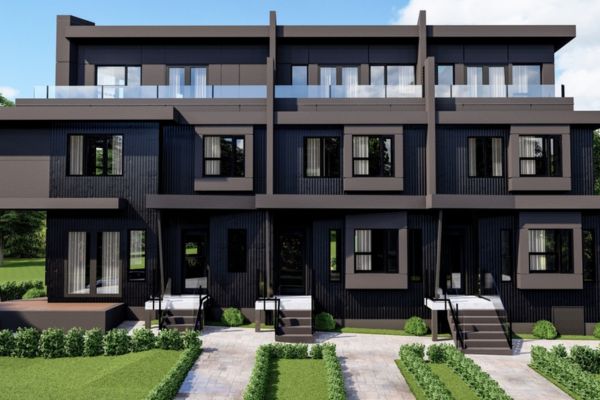Not to be overly dramatic here, but we face the growing risk that a doom loop is taking hold in the housing market.
Such a situation occurs when one problem turns into another and then another, resulting in a self-reinforcing downward spiral of negative consequences.
Today, the residential construction industry is facing the highest interest rates in more than 20 years, stubbornly high inflation, a labour supply shortage, and high costs for building materials. Several reports indicate that people are now leaving our cities because they can’t afford to buy or rent.
In response, the Canada Mortgage and Housing Corporation (CMHC) is ringing the alarm bells. Bob Dugan, chief economist at the federal housing agency, is warning that the situation will deteriorate further if no action is taken to boost supply. CMHC figures that Canada needs to build 3.5 million homes by 2030 to reach some semblance of affordability. However, Dugan is forecasting that only 210,000 to 220,000 homes will be built this year – a far cry from the 260,000 constructed in 2022 or the 271,000 constructed in 2021.
In other words, we are moving in the wrong direction – at a time when we need to double the number of housing starts.
The Current Reality of Availability
Another report by the Bank of Montreal indicates that affordability is not coming anytime soon, and we may have to accept a new reality. Although there has been a significant price correction across most of Canada, the report’s authors estimate that we won’t be able to build enough houses to keep up with current demand. It may be time to accept that more market supply will not reduce prices – and higher values are the new norm.
Normally, housing is considered affordable when it accounts for no more than one-third of an individual’s gross income. A recent quarterly affordability monitor released by the National Bank of Canada indicates that mortgage payments as a percentage of an individual’s income were almost 61 per cent.
Alarmingly, in Toronto, as a percentage of income were at 83 per cent in the first quarter of this year. On a median home price of $1.14 million, a down payment of $227,514 was needed, which would take 297 months to save and requires an annual income of $230,923.
People are giving up on the prospect of ever owning a home.
A recent Royal LePage survey says two-thirds of first-time buyers are worried they won’t be able to break into the market. The survey revealed that 67 per cent of first-time buyers worried they’d miss out on buying a home because of an insufficient down payment – up five per cent since 2021 and 10 per cent since 2019. In the Greater Toronto Area, the anxiety was even higher, with 74 per cent expressing such fears.
The doom loop has repercussions.

Worst-Case Scenario?
If you want an example of how bad this can get, look no further than San Francisco, California. In recent years, the city began a rapid downward spiral with higher crime rates, more homelessness, widespread drug use, crumbling transit, and empty offices. Real estate prices climbed out of control, and the middle class left the city due to lack of middle-income housing and affordability.
Unfortunately, the same thing is happening in Canada.
A recent report by the West End Home Builders’ Association warned that Hamilton, Ontario, is at risk of losing the population that keeps the city functioning – such as skilled trades – because of the region’s growing housing crisis. People do not realize how bad the situation really is – and it’s getting worse. Personal debt levels are rising, and homelessness has doubled in a year. I expect that the situation will only get worse in 2024.
We must stop the cycle by fixing the housing situation.
A Possible Solution
My organization, the Residential Construction Council of Ontario (RESCON), convened a Special Housing Action Committee in the run-up to the Toronto mayoral byelection and came up with specific recommendations to help fix the housing supply situation.
We are proposing that the three-storey limit on building residential units on minor arterial roads in Toronto be expanded to eight, and to 15 storeys on major arterials.
We also want more above-grade parking permitted for new high-rise developments instead of forcing developers to build underground. This would speed up construction times and result in less GHG emissions.

Amendments must also be made to allow building floor plates on tall buildings to exceed 750m², as the current standard limits the optimization of new construction and the size of apartment units. We must also make better use of technology to streamline the development approvals process.
Meanwhile, the onerous and regressive development charges and HST on new housing should be eliminated. A report by the Canadian Centre for Economic Analysis showed that taxes on the purchase of a new home in Ontario account for 31 per cent of the price, up from 24 per cent in 2012.
We must stop the doom loop. These actions would be a good start.
Richard Lyall is president of the Residential Construction Council of Ontario (RESCON). He has represented the building industry in Ontario since 1991. Contact him at media@rescon.com.









